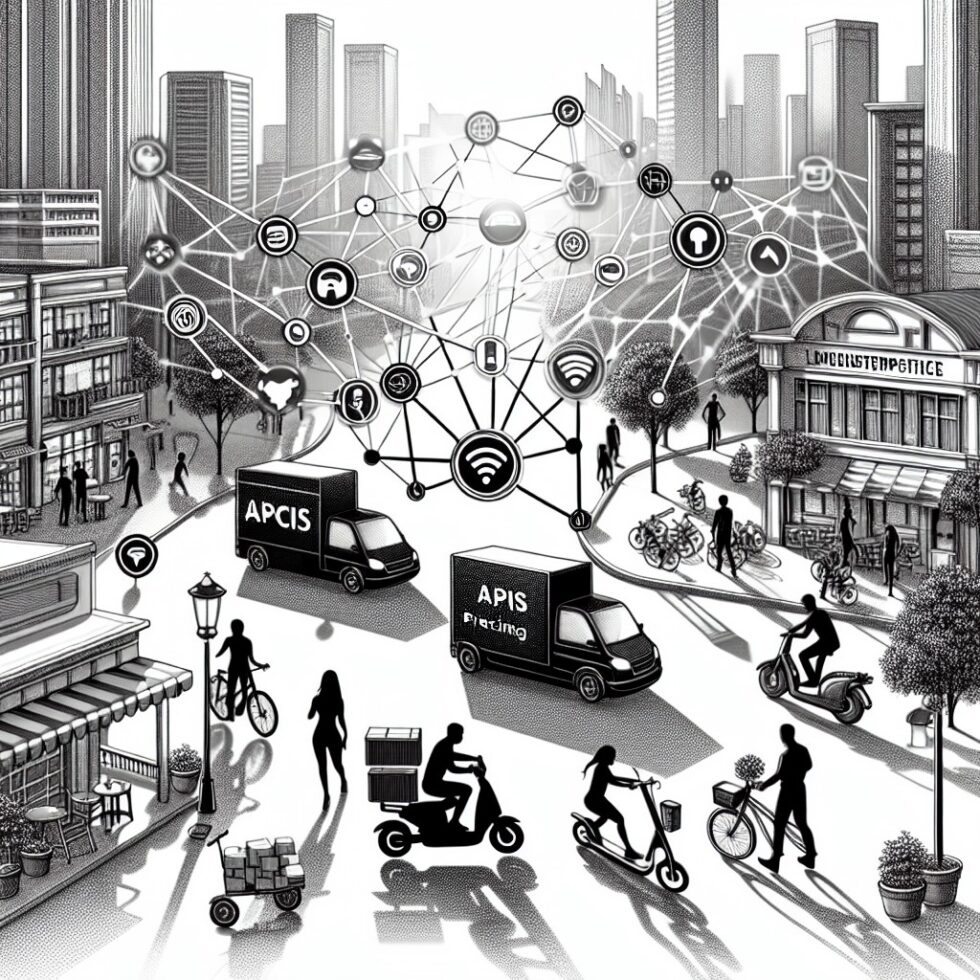
The curb has gone from a painted line to a living resource. In busy districts, space along the edge of the street decides whether a parcel arrives on time, a ride‑hail pickup blocks a lane, or a scooter drop‑off creates a hazard. For years, the rules lived on metal signs and in parking databases that rarely matched reality. Today, cities are hardening that gray area into a real‑time service layer with sensors, software, and APIs that fleets can tap into directly.
This article explains what a “real‑time curb” is, why it matters, and how to build one that works for people and businesses without sacrificing privacy. We’ll cover the data models, the hardware that measures occupancy, the policies that set prices and priorities, and the developer surface fleets can depend on. By the end, you’ll have a practical playbook to pilot on a few block faces—and a clear path to scale if the results pencil out.
What a Real‑Time Curb Actually Is
A real‑time curb is a live map of curb segments, the rules that govern them, and the current occupancy of each space. It turns what used to be a static parking map into a programmable resource that delivery vans, ride‑hail drivers, shuttles, paratransit, and scooters can use in predictable ways.
From Metal Signs to Structured Rules
The starting point is inventory. Cities break roads into “block faces” and smaller segments with attributes:
- Location and geometry: coordinates, segment length, and side of street.
- Allowed uses: loading, passenger pickup, bike corrals, short‑term parking, bus layover, or freight only.
- Time windows: weekdays 7–11 a.m., evenings, weekends, event days.
- Vehicle classes: commercial vans, trucks by size class, TNC pickups, wheelchair vans, cargo bikes.
- Price and duration: free with limits, paid per minute, escalating rates, or reservation fees.
- Exceptions: accessible permits, local delivery permits, construction zones, special events.
All of this lives in a machine‑readable format and is kept current as field crews update signs. The rules can be interpreted by apps, not just people squinting at a pole.
Standards You Can Build On
We already have useful building blocks:
- CurbLR expresses block‑by‑block curb regulations with clear time windows and allowed uses.
- Mobility Data Specification (MDS) handles programmatic communication between cities and mobility providers (for example, scooter operators), including policy and compliance data.
- Alliance for Parking Data Standards (APDS) covers off‑street and some on‑street parking data models and transactions.
- GTFS‑Flex extends transit feeds for demand‑responsive service and can help describe pickup/drop‑off zones that overlap with curb operations.
These standards do not solve everything, but they reduce the time you spend hand‑crafting formats. Most cities adopt one for curb rules, add an occupancy layer, and expose a simple API for quotes, reservations, and check‑ins.
Sensors That See Occupancy Without Seeing You
To make the curb live, you need to know when a space is free, when it’s occupied, and what kind of vehicle is there. There is no single perfect sensor; the right mix depends on block length, tree cover, lighting, and budget. The good news: modern sensors can measure what you need while keeping people anonymous.
Common Sensor Options
- In‑ground magnetometers: Small pucks detect the presence of a large metal mass. They are accurate for vehicle presence, low power, and weather‑proof. They cannot identify plates or people, which is a privacy plus. Installation requires drilling and maintenance requires planning.
- Overhead cameras with edge AI: A single unit can observe multiple spaces. On‑device models can classify vehicle types and avoid storing raw video, emitting only counts and events. You will still need careful placement, regular model updates, and strong privacy policies.
- LiDAR or mmWave radar: Useful when lighting or weather is poor. These sensors provide outlines and motion without facial detail. They cost more but can track short events like quick drop‑offs with high accuracy.
- ALPR for enforcement zones: Automated license plate recognition is effective for compliance checks, but should be limited to targeted areas and paired with clear retention limits and audit logs.
Coverage Strategy and Reliability
You do not need sensors on every meter of curb to get value. A practical approach is to select a few critical blocks (near hospitals, schools, market streets), deploy dense sensors there, and use statistical sampling plus mobile app check‑ins for nearby areas. Aim for:
- Measured occupancy on 20–40% of managed curb within a pilot zone.
- Adjacency estimates for the rest, fused from sampled blocks, historic averages, and fleet check‑ins.
- Field validation every quarter to recalibrate models.
Build for maintenance from day one. Sensors fail. You need battery swap schedules, spare units, and a remote dashboard that flags gaps. Treat uptime like a utility: publish it, track it, and improve it.
A Low‑Cost Start
If your budget is tight, start with a “soft sensing” design. Ask fleets to check in on arrival and departure in exchange for lower fees. Combine these signals with short “manual audits” by field staff at predictable times to correct drift. It will not be perfect, but it is enough to power basic reservations and speed up enforcement response to chronic hot spots.
APIs That Fleets Can Depend On
Fleets do not want to guess. They want to ask for a place to stop, know the price and rules, and receive a proof of right‑to‑use they can show if asked. That requires a minimal yet robust API set. Keep it consistent across vendors; consistency is what unlocks adoption.
Core Endpoints
- Inventory: Returns curb segments, rules, and time windows. Includes a short description fit for drivers.
- Eligibility: Given a vehicle class, permit, and time, returns allowed actions within a radius.
- Quote: Given a desired arrival window and expected dwell time, returns price and options (including “no cost if you leave within 3 minutes”).
- Reservation: Creates a soft hold for a time window. Returns a token or QR a parking officer can scan.
- Check‑in/Check‑out: Starts and ends the metered session, with location proof (e.g., GNSS confidence plus short‑range Bluetooth handshake near a sign beacon).
- Receipt: Sends a final record for billing and appeals, including time, location, and rules applied.
- Enforcement webhook: Notifies the platform when a violation is recorded, so fleets can nudge drivers or appeal with evidence.
Keep payloads small and privacy‑safe. IDs should represent the vehicle or fleet account, not the individual driver. For check‑ins, prefer cryptographic proofs or proximity checks over photos.
Auth, Rate Limits, and Fair Access
Use standard OAuth 2.0 client credentials for fleets. Add per‑fleet rate limits and short‑term throttling so one provider cannot crowd out others. Enforce quotas by vehicle class and time of day to preserve access for paratransit and school zones.
Publish a transparent access policy. Fairness is not just a good look—it makes the system defensible when demand exceeds supply.
Pricing That Drives Better Behavior
Price is a policy lever, not a tax. Good designs reward short, legal stops and discourage double‑parking. Examples:
- Grace dosed by time: First 3–5 minutes are free for quick pickups, then per‑minute rates ramp up.
- Escalating rates: Minute 1–10 cheap, 11–20 higher, 21+ expensive. This helps turnover.
- Hot spot surge: Prices tick up when occupancy stays above a threshold. Keep caps and advance notice.
- Equity discounts: Lower rates for small local businesses and accessible transport under verified permits.
Publish the rationale in plain language. People accept fees when they see faster deliveries and fewer blocked bike lanes.
Payments and Clearing You Can Audit
Once you allow reservations and timed loading, you need a way to collect payments and settle them across fleets and city accounts. Do it in a way that auditors can trace end‑to‑end without storing sensitive driver data.
Wallets and Billing
- Driver wallets: Useful for individual contractors and couriers. Add top‑ups, refunds, and automatic receipts.
- Fleet invoicing: Monthly settlement based on receipts, with volume discounts or service‑level penalties for chronic abuses.
- Dispute flow: A simple process to contest charges, with time‑stamped evidence and resolution deadlines.
Keep settlement files simple. A line‑item CSV with reservation ID, location code, start/stop times, unit price, taxes, and outcome is enough for most finance teams. Pair it with a signed JSON feed for programmatic reconciliation.
Enforcement People Accept
If rules are not enforced, they stop working. If enforcement feels arbitrary or invasive, you will lose trust. The middle ground uses proactive design and gentle friction before penalties.
Soft Enforcement
- Signage that matches the app: QR codes on signs link to the same rules the API returns. No contradictions.
- Nudges: When sensors detect a stop in a no‑stopping zone, send a push to the fleet with the nearest legal alternative.
- Grace policy: If a driver leaves quickly after a warning, do not fine them. Save penalties for repeat offenders.
Hard Enforcement With Guardrails
- ALPR in limited areas: Use it in high‑risk zones, with short retention and strict access controls.
- Proof tokens: Officers scan reservation tokens or plate‑linked QR codes to verify right‑to‑use without calling a back office.
- Public metrics: Publish monthly stats on violations, false positives, and appeals. Visibility keeps the program honest.
Design for Accessibility and Small Business
Good curb systems make life easier for people who rely on them the most.
Accessibility
- Priority windows for paratransit: Reserve time slots at key fronts like clinics and community centers.
- Low‑friction proof: Recognize permits automatically in the app to avoid extra steps at drop‑off.
- Clear curb edges: Keep ramps and tactile areas free by designating buffer zones that cannot be reserved.
Small Business Support
- Merchant codes: Let shops validate short‑stay pickups for customers, just like parking validation.
- Delivery windows: Offer predictable low‑cost delivery windows early mornings to avoid peak conflicts.
- Cash options: For drivers without cards, keep a pay‑by‑phone or retail cash top‑up path open.
Run a Pilot Without Derailing Your Day Job
Pilots should be fast and reversible. A 6–9 month run on a few blocks can show signal without huge contracts.
Ten Steps to a Solid Start
- Pick a zone: Two to four blocks near freight generators (markets, hospitals, campuses).
- Digitize the rules: Inventory existing signs and encode them using an open format.
- Engage neighbors: Couriers, shop owners, school staff. Get their pains and constraints up front.
- Instrument sparingly: Mix a few in‑ground sensors with one overhead sensor per block face.
- Stand up the API: Inventory, eligibility, quote, and check‑in first. Reservations can come later.
- Set simple prices: A grace period plus a two‑tier rate is better than a complex ladder on day one.
- Train enforcement: Short scripts, handheld scanners, a working escalation path, and a friendly tone.
- Launch with fleets: One parcel carrier, one ride‑hail, one local delivery co‑op.
- Publish baseline metrics: Double‑parking counts, average dwell time, crash rates near intersections.
- Iterate monthly: Adjust prices or time windows with data and public notes on why you changed them.
Measure What Matters
Shiny dashboards can hide the point. The curb is succeeding if streets are safer and goods move faster. Focus on a few clear indicators:
Core KPIs
- Average dwell time by vehicle class and time of day.
- Turnover per space per hour in peak windows.
- Double‑parking incidents measured by sensors or officer observations.
- Near‑miss and crash proxies at intersections (for example, blocked sight lines or emergency braking events if you have access to aggregated vehicle telematics).
- On‑time deliveries reported by fleets before and after the pilot.
- Equity metrics like access within walking distance for mobility‑impaired users.
Publish these monthly. Keep the targets modest at first: 10–20% improvement in dwell and double‑parking is a big win many corridors can achieve.
Developer Notes: Building Against Curb APIs
If you build software for fleets, the curb is yet another surface to integrate. Keep drivers out of the loop as much as possible by automating the routine.
Driver Experience Design
- Auto‑suggest stops: As drivers approach a destination, show legal zones and expected price and walking distance.
- Silent check‑ins: Start a session using geofencing plus a Bluetooth beacon near signs. Only ask for manual confirmation if the signal is weak.
- Planned routing: Re‑order stops to line up with preferred curb windows and lower rates.
Resilience Tactics
- Offline mode: Cache inventory and rules so the app can operate when coverage drops.
- Fallback logic: If reservation fails, show the nearest legal alternative within a block or two.
- Privacy budget: Do not store exact paths or faces. Keep only session tokens and anonymized location buckets for analytics.
Procurement and Governance for City Teams
You can buy curb tech like you buy traffic signals: specify outcomes, insist on interoperability, and plan for turnover.
RFP Checklist
- Open standards: Accept CurbLR for rules and a documented, royalty‑free API for transactions.
- Data ownership: The city owns the inventory and policy data. Vendors retain only what they need to operate.
- Privacy controls: Clear retention schedules, audit trails, and third‑party privacy reviews for any camera‑based system.
- Exit plan: A path to migrate data and devices if you switch vendors. Include escrow for core configuration.
- Service levels: Uptime targets, sensor failure response times, and appeal resolution SLAs.
Where This Goes Next
As more streets become programmable, vehicles will plan around the curb instead of improvising at the last second. Three near‑term shifts are likely:
Freight That Books Space Ahead
Carriers will bundle curb reservations into route plans. Morning delivery routes will align with low‑rate windows. High‑priority stops—like pharmacies—will have guaranteed slots. This reduces circling and cuts emissions from idling.
Ride‑Hail That Knows Where to Pull In
Pickup pins will land on legal zones by default. Apps will tell passengers to walk a half block to a safe bay. The time you save not getting ticketed or circling will more than offset a short walk.
Small Robots and Cargo Bikes
Lightweight delivery devices need micro‑zones at the curb to swap payloads and recharge. Expect mini‑hubs to emerge on corners, with rules that keep them orderly and out of pedestrian flows.
What about autonomy? Even as vehicles gain more smarts, *curb rules will still come from the street*. A car that can drive itself still needs permission to stop, unload, or wait. The API will function like a “green wave” for stopping, not just moving.
Common Pitfalls and How to Avoid Them
- Over‑engineering: You do not need perfect occupancy data to improve outcomes. Start simple and iterate.
- Conflicting rules: If the app and the sign disagree, trust collapses. Keep one source of truth and sync often.
- Invisible pricing: Surprise fees create backlash. Make prices and grace periods obvious in the app and on signs.
- Privacy drift: Resist pressure to store more video or location details “just in case.” Decide, document, and audit.
- One‑size for all: A stadium block and a clinic need different rules. Tune by context, not politics.
Why Now
Three trends make the real‑time curb practical today:
- Affordable sensors: Edge AI hardware and in‑ground devices have dropped in price and improved in reliability.
- Standard data models: Cities no longer need custom formats for every vendor and mode.
- Fleet software maturity: Delivery and ride‑hail apps can integrate one more API if it saves them time and fines.
The payoff is tangible: fewer blocked bike lanes, faster deliveries, and less idling. People do not notice when curbs just work—and that is the point.
Summary:
- The curb is becoming a live, programmable resource with clear rules, occupancy data, and simple APIs.
- Start with structured curb rules, then add sensors that report presence without recording people.
- Offer fleets predictable access: eligibility, quotes, reservations, and check‑ins with privacy‑safe proofs.
- Price to encourage good behavior: grace periods, escalating rates, and discounts for priority uses.
- Design enforcement to be fair and transparent, with privacy guardrails and public metrics.
- Run a modest pilot, measure dwell, turnover, and double‑parking, and adjust monthly.
- Procure with open standards, data ownership, and exit plans in mind.
- Expect near‑term gains in freight routing, safer ride‑hail pickups, and orderly micro‑logistics at corners.





